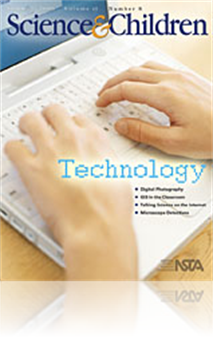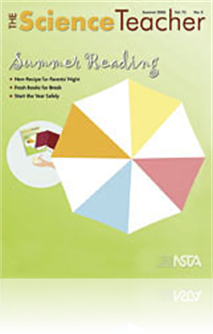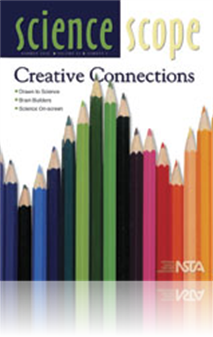All Resources
Journal Article
In 19th century England, Luddites broke into factories at night to destroy the new, efficient machinery that threatened their jobs. The term has since been applied to anyone fearful or resistent to new technology. In this section the editor remarks ...
Journal Article
Point of View: What Makes it Science? A Modern Look
Scientific inquiry differs from other human inquiry in the kind of evidence scientists pay attention to. Scientific evidence was born, historically of human curiosity and its search for practical explanations of observed phenomena on which everyone ...
Journal Article
Every Day Science Calendar: July 2006
This monthly feature contains facts and challenges for the science explorer. ...
Journal Article
Sliding common objects, such as blocks, boxes, balls, empty containers, and even play foods down a ramp is a fun way for kids to start exploring some physical science concepts related to the position, force and motion of objects and to develop their ...
Journal Article
Problems Without Numbers--At First
When teaching problem solving, how many times have you been frustrated by students plugging in numerical values at the earliest opportunity? Symbols that represent concepts--"m" for mass, "v" for speed, "F" for force, and so forth--are too quickly su...
Journal Article
Recent focus on the planet Mars has led to incredible teaching opportunities, such as the Mars Student Imaging Project (MSIP) facilitated by Arizona State University's (ASU) Mars Education Program. The MSIP curriculum serves as an excellent model for...
Journal Article
The Case of the Disappearing Snack
Who doesn't love a good mystery? Not any kid we know! Second- and third-grade students sure did as they eagerly solved The Case of the Disappearing Snack. As they investigated the "crime," students developed critical-thinking skills and practiced u...
Journal Article
Build-a-Brain Project: Students Design and Model the Brain of an Imaginary Animal
The brain is a truly fascinating structure! Although the brain is a single organ, it is very complex and has several regions, each having a specific function. In this fun-filled, "minds-on" lesson, students learn about the various regions of the brai...
Journal Article
Awaken and sharpen your students' powers of observation by using art, particulary drawing, in your science classroom. There is a commonality between methods that artists employ in portraying their subjects and the methods that those studying nature e...
Journal Article
Field Botany and Creative Writing: Where the Science of Writing Meets the Writing of Science
Merging science and writing to enhance both subjects was the objective of a venture known as Plant Notes. At first, teacher-written notes served as the inspiration for this writing assignment. Later, eclectic student-written novellas, poems, song l...
Journal Article
Teaching Through Trade Books: Imaginative Inventions
In today's fast-growing, highly competitive global marketplace, innovative thinking is more important than ever. Encourage your students' creativity, imagination, and problem-solving skills with these technological design activities. Technology inv...
Journal Article
Science Sampler: The scientist and artist in all
Eliminate the faulty, stereotypical concept of the scientist and expose science as a diverse realm through this engaging and eye-opening activity. A class discussion and drawing activity bring students to understand that their perception of who scien...






